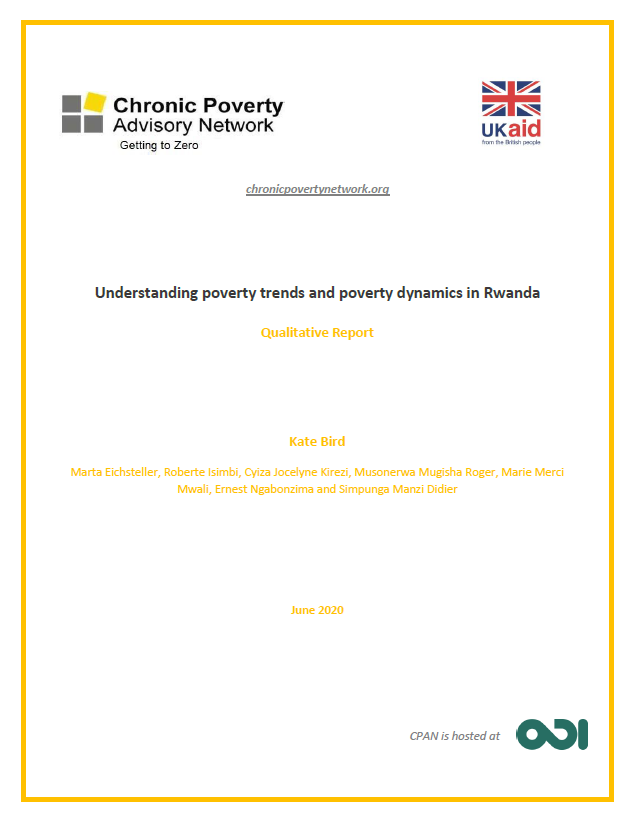Overview
This paper presents the results of the qualitative data collection undertaken in Rwanda in 2017 and 2019 as part of a Q-squared analysis of poverty dynamics. It seeks to build on earlier work by da Corta et al. (2018a and 2018b) and Simons (2018) to understand the reasons for the slowdown in poverty reduction in Rwanda from 2014.
Poverty in Rwanda, as measured by the international poverty line, fell from 77.2% in 2001 to 55.5% in 2017, while poverty measured by the national poverty line declined from 58.9% to 38.2%. The poverty reduction rate has slowed in Rwanda, with 14.5% moving out of poverty between 2010/11 and 2013/14 and 9.52% moving in, compared with 13.4% moving out of poverty between 2013/14 and 2016/17 and 11.7% moving in.
Rwanda is a poor country – with a gross domestic product (GDP) per capita of US$748 in 2017 according to the World Bank – where 80% of the population are rural, 85% of the poorest quintile are dependent on agriculture and there are wide regional variations in poverty exit rates, with higher proportions of poor people in the Southern Province (and, to a lesser extent, in the Western Province) than in either the Northern or Eastern Provinces (World Bank, 2017). What stands out in particular is the way in which the capital, Kigali, is different to the rest of the country, with asset measures of poverty showing only 1% of the city’s population categorised as ‘poorest’,1 compared to 32% in the Southern Province. Similarly, 64% of the population of Kigali is in the wealthiest category, compared to only 11% in either the Southern or Northern Provinces. There have also been regional differences in poverty reduction rates, with much of the poverty reduction occurring in Kigali while the poverty headcount has risen in the Western Province and extreme poverty has risen in the Southern Province.
Food insecurity in Rwanda is of serious concern, with 57.3% of the population either food insecure or close to being food insecure in 2018. Over half of households (53%) had adopted coping strategies to deal with food shortages in the month before the food security survey, with half of that number adopting adverse coping strategies such as harvesting immature crops, consuming seed stocks or reducing spending on productive assets. Stunting rates are above the WHO’s critical threshold of 40% in eleven districts (of which three are study sites for this research) and only 17% of children achieved the minimum acceptable diet, based on dietary diversity and meal frequency. Nevertheless, child malnutrition (stunting) for children aged 6-59 months is on an improving trajectory and dropped from 37% to 35% between 2015 and 2018.
There is a strong relationship between livelihood group, land scarcity, education of household head, household dependency ratios, gender of head of household and food insecurity. Almost 60% of food-insecure households are in the two poorest wealth quintiles. Food insecurity is also gendered, with female-headed households more likely to be food insecure. Finally, households with disabled household heads are more likely to be food insecure, while the more educated the household head, the less likely the household is to be food insecure.
Lead author: Kate Bird

